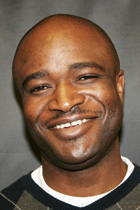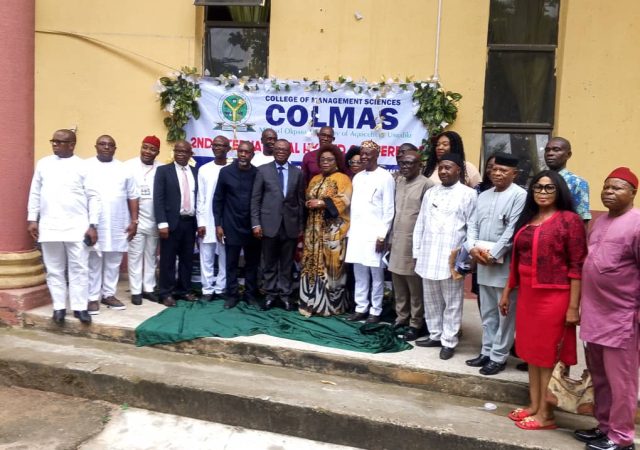
By Akinyinka Akinyoade
The exceptional intercensal growth rates and other reasons for distortion Generally, all the colonial censuses were technically deficient; the 1962 and 1973 counts were dropped due to the intense political tensions they provoked, and though the 1963 census figures was initially officially accepted, subsequent widespread dispute led to it being dropped. Up till late 1990s, opinions differed among local, national and international bodies as to the number of Nigerians living in Nigeria and the rate of increase despite thirteen censuses that pre-dated 1991 national census.
However when the 1991 census was released, there was relative consensus on the total figure. For the 2006 census data, accuracy of internal distribution remains disputed; logistic ‘shortages’ of census materials were seen as deliberate ploy to inflate census figures in some areas (Obono and Omoluabi 2014). In this section, we discuss other factors that have unwittingly contributed to the distrustful public attitude to reception of census figures in Nigeria.
For instance, the count of 1963 implied a 44% increase in Nigeria’s population over that of 1950-53; by the 1973 census, the population was supposed to have risen by about a further 30% over that of 1963. Many scholars viewed such massive increases as unrealistic and indicative of deliberate inflation of figures, indicative of political and technical problems. Udo (1968) blamed the excessiveness of 1952-63 intercensal growth rate on politicians’ desire to secure more electoral seats; regional governments made sure that their 1963 figures of their regions or constituencies were ‘larger than those for 1962 in order not to appear guilty of inflation in the nullified census of 1962’ (Yesufu, in Ahonsi 1988). The re-taken census of 1963 that yielded 57.7% proportion in favour of the North (up from previous 49.2%), was deemed political rather than technical increase. However, Ogunlesi (1968) contends that these disparities, though abnormal at first sight, may have been due more to the serious operational problems encountered and gross inefficiency on the part of many fieldworkers than to conscious manipulation; many Moslem women in parts of the North were omitted (Iro, in Ahonsi 1988). This allows us to examine other non-political factors that contributed to problematic census-taking in Nigeria
On one hand against Northern Nigeria, the rationale for the count inflation charge stems from observation of excessive intercensal growth rates of the population, in a region typified by semi-aridity and low population density. Let us quickly review certain events and their implications for acceptability of census results released at the regional or state level. In some instances, double-counting may have arisen from the ‘Nigerian habit of belonging simultaneously to a place of work different from place of birth/origin’, an observation earlier made by (Aluko, 1965), yet still very much in operation in the 21st century. Also, distortion in figures of the 1962 and 1973 censuses was due to discovery of new settlements not listed in a previous census. Some of these settlements were labeled fake by Southerners. Also, health developments resulted in declining mortality and increasing fertility in the relatively poorer regions of the North in the early 1970s. On part of the South, lower figures may not be disconnected to the large swathe of Southern Cameroons that opted to join Cameroon as a nation. In the 1953 census, people in this area were counted as part of colonial southern Nigeria. Given Eastern Regional Government unsubtle whispering campaign against the results of the census retaken in 1963, it was a bit of surprise that the AG-led Western Regional Government quickly publicly accepted the outcome despite lower returns for the West. Whether the AG leader identified non-political reasons for changes in intercensal population, is left to conjecture. In addition, in the 1960s, over 75% of Nigeria’s population lived in the rural areas; a large proportion of this group viewed the census as a means of tracking down tax payers, which they tried to evade. This spurs another question: did the higher figures returned for the North indicate that Northerners were open to taxation compared to Southerners?
Furthermore, drop in the number of people in the Eastern states is traceable to the impact of 1967-70 civil war that decimated the population. Many children died at this time, with implications for population replacement through childbearing when those that survived reach childbearing age.
The drop in numbers in some areas of the West could be linked to the growth of Lagos, Nigeria’s premier city in the early years of the oil boom. As Lagos grew as Nigeria’s industrial and commercial nerve centre, it attracted population of bordering States in droves.
With the background of controversies, questions arise: who modified the figures to the advantage of the North? How did this occur: did citizens avail themselves for multiple counting as alleged? Were enumerators instructed to fill census questionnaire to the brim with fabricated information? Did central level politicians simply scribbled figures as was done in 1911? Census officials have not been left off the hook; Ebigbola (1981) asserted that while Nigeria can now boast of a large number of capable technical staff that can handle enumeration effectively, these staff have equally become torn in the flesh of population census in Nigeria, for they have been responsible for falsification of population figures. A supervisor of southern origin posted to Northern Nigeria in the Supervisor exchange process in one of the censuses lamented that:
Data manipulation is possible where supervisors exchanged across regions did not have space and time to understand, monitor, and prevent certain local practices. We got to Borno State and we were all surprised by the hospitality of the local government we were posted to for the monitoring exercise. The LG officials gave us an air-conditioned bus to take us across the border area to Chad. The trip lasted a whole day; may be the questionnaires were doctored in our absence.
Constant bickering over true population size of constituent sub-national units of Nigeria has implications for accuracy and acceptability of future censuses to different segment of the country, just because of distrust.
Conclusion
Over the years, census taking evolved from sailor’s impressions of population size, colonial officials’ estimating numbers of people on a piece of paper in an office in Zungeru to systematic collection of data using questionnaires, expanding the scope and completeness of data, discarding sensitive questions and adopting GIS. But the question, ‘How many Nigerians?’ still remains controversial. Ethno-regional sentiment – the fear of any group of elites that the higher figures would be deliberately returned for another ethnic group or political zone to justify reception of a bigger portion of the national cake – is used to exaggerate perception of distortions in returned figures.
Given Nigeria’s present state of improvement in know-how to conduct censuses, relatively higher literacy levels, and of transport and communications; future census conduct can be rid of many errors.
In subsequent attempts to carry out counts at regular intervals, data of higher quality can be obtained due to gains in technical experience. But, how acceptable the figures will be to political elites is left to conjecture.
Once the National Population Commission – filled with professionals having demographic data-handling experience to conduct a reliable count – as a permanent technical organ is satisfied that the derived data have passed through the various quality checks according to laid down criteria, results need to be officially accepted, irrespective of new population distribution of constituent units that shows up.
From independence to 2006, motivations for over-count in Censuses existed in form of political representation and revenue allocation. Strong and institutional controls for credible censuses were often subverted by exigencies encountered by census functionaries in the field and this might have undermined data quality (Obono and Omoluabi 2014). Thus, there is the need to adopt more pro-active system for collecting vital statistics (events like births, deaths, migration, marriage, divorce) to update inter-census data. In addition, the importance of population in the revenue allocation formula for states and local government councils has to be re-appraised. For more promising intergovernmental transfers, census figures may have in the past been inflated by nearly all segments of the country. It is recommended that emphasis in the distribution of revenue should be shifted from a large population size to specific economic and social programs aimed at improving the quality of life of the people concerned. Perhaps until further advancement in Nigeria’s system of public service delivery and de-emphasis of population figures in Nigeria’s revenue allocation system (using Indonesia’s model ), then census figures may start becoming acceptable in Nigeria.
References
Adim, F. (2007, January 12). Delay in release gave room for manipulation. Lagos, Nigeria: The Guardian, 27. In, Bamgbose, B. J. (2009). Falsification of population census data in a heterogeneous Nigerian state: The fourth republic example. African Journal of Political Science and International Relations, 3(8), 311-319.
Afolayan, A. A., (1982). Population. In A. L. Mabogunje (ed.), Geographical Perspective on Nigerian Development. Ibadan, Nigeria: Heinemann Publications.
Ahonsi, B. A. (1988). Deliberate falsification and census data in Nigeria. African Affairs, 87(349), pp 553-562.
Akerele, T. (2007, January 15). Matters arising. Lagos, Nigeria: The Guardian, 65
Aluko, S.A. (1965). How Many Nigerians? An Analysis of Nigeria’s Census Problems, 1901-63. The Journal of Modern African Studies, 2, 371-392. Retrieved from http://www.jstor.org/stable/159549
Arowolo, O. O. (1981). Designing the Next Census for Nigeria. In, Population Data Assessment in Nigeria, Population Association of Nigeria, PAN—Proceedings No. 1, Benin City, p. 43.
Arowolo, O., and Daramola, 0. (eds.) (1982). Philosophy of Population Census in Nigeria. Lagos: National Population Commission
Ballard, J.A., (1971). Administrative origins of Nigerian Federalism. African Affairs 70(279), 333-348.
Bamgbose, B. J. (2009). Falsification of population census data in a heterogeneous Nigerian state: The fourth republic example. African Journal of Political Science and International Relations, 3(8), 311-319.
Barbour, K. M. and Prothero, R. M. (Eds.) (1961). Essays on African Population. London.
Diamond, Larry Jay, 1998. Class, ethnicity and Democracy in Nigeria: the failure of the First Republic, Syracuse University Press, Syracuse, New York 13244-5260
Duru, R. C., (1968). Problems of Data Collection for Population Studies in Western Nigeria. In, J.C. Caldwell and C. Okonjo (Eds.), The Population of tropical Africa. London: Longmans, pp. 71-72.
Hauser, P. (1975). Social Statistics in Use. New York: Russell Sage.
Iro, Post-Independence Population Census Data in Nigeria, p. 14. Cited in, Ahonsi, B. A. (1988). Deliberate falsification and census data in Nigeria. African Affairs, 87(349), pp 553-562.
Kolapo, Y. and Faloseyi, M. (2007, February 6). Lagos and the fallacies in national census figures. Lagos, Nigeria: The Punch, 3.
Kolapo, Y., Obasola, K., and Ibona, J. (2007, February 6). Lagos protests census results, heads for tribunal. Lagos, Nigeria: The Punch, 2.
Macleod-Smith, A. M., (1946). The collection of statistics as it affects the development programme. A Ten-Year Plan for Development and Welfare for Nigeria, 1946. Government Printer, Lagos. Appendix XXI, pp. 130-131
Makinwa, P. K. (1985). Population Data: The Importance of Census, Sample Survey and Vital Registration System. Population Education Monograph, 15, Lagos: Nigerian Educational Research Council.
Morah, B. C., Adekunle, C. F. and Adekunle, J. A. (1981). Evaluation of Past and Recommendations with Respect to Population Counts in Nigeria. In, H. Chojaacka, P. Olusanya and F. Ojo (Eds.), Population and Economic Development in Nigeria in the Nineteen Eighties. United Nations, TCD/SEM, 81/2, New York, pp. 14-16.
Nigeria, (1970). Second National Development Plan, 1970-74. Lagos, Nigeria: Ministry of Information.
Nigeria, (1975). Third National Development Plan, 1975-80. Lagos, Nigeria: Ministry of National Planning.
Obasanjo, O., (2006, March 21). Census is indispensable to the nation’s quest of sustainable development. The Guardian, 9.
Obasi, N. (1992, March 22). Census ‘91: Myths Exploded, Myths Sustained. Nigerian Sunday Concord, 15-17.
Ogunlesi, T. O., (1968). Before and After a Population Census in Nigeria: a physician’s experience. In, J.C.Caldwell and C. Okonjo (Eds.), The Population of tropical Africa. London: Longmans, pp. 79-82
Oka Obono and Elizabeth Omoluabi, 2014, Technical and political aspects of the 2006 Nigerian population and housing census, African Population Studies Vol 27, 2 Supp (Mar 2014), pp. 249-262
Okafor, S., (1981). Indirect Rule: The Development of Central Legislative in Nigeria. Lagos, Nigeria: Nelson.
Okolo, A. (1999). The Nigerian Census: Problems and Prospects. The American Statistician, 53(4), 321-325. Retrieved from http://www.jstor.org/stable/2686050
Okonjo, C., (1968). A Preliminary Medium Estimate of the 1962 mid-year Population of Nigeria. In, J.C.
Caldwell and C. Okonjo (Eds.), The Population of tropical Africa. London: Longmans, pp. 79-82
Oluleye, J.J. (1985). Military Leadership in Nigeria 1966 – 1979. Ibadan, Nigeria: University Press Limited.
Olusanya, P. O. (1989a). Population and Development Planning in Nigeria. In T. Tamuno, and Atanda J.A. (Eds.), Nigeria since Independence The First 25 years Government and Public Policy. Ibadan, Nigeria: Heinemann.
Olusanya, P. O., (1989b). Evolution and status of family planning in Nigeria. In, Developments in family planning policies and programmes in Africa. Proceedings of a Colloquium on the Impact of Family Planning in Sub-Saharan Africa: Current Issues and Prospects. Regional Institute for Population Studies, University of Ghana (Legon), 1989. pp 408-450.
Onyeka-Ben, V. (2007, January 12). It is tinted with political permutations. Lagos, Nigeria: The Guardian, 28. In, Bamgbose, B. J. (2009). Falsification of population census data in a heterogeneous Nigerian state: The fourth republic example. African Journal of Political Science and International Relations, 3(8), 311-319.
Orubuloyo, I. O., (1989). Population Policy in Nigeria. In, Developments in family planning policies and programmes in Africa. Proceedings of a Colloquium on the Impact of Family Planning in Sub-Saharan Africa: Current Issues and Prospects. Regional Institute for Population Studies, University of Ghana (Legon), 1989. pp 451-472
Dr. Akinyinka Akinyoade is a Senior Researcher at African Studies Centre, Leiden University, Netherlands
a.akinyoade@asc.leidenuniv.nl










